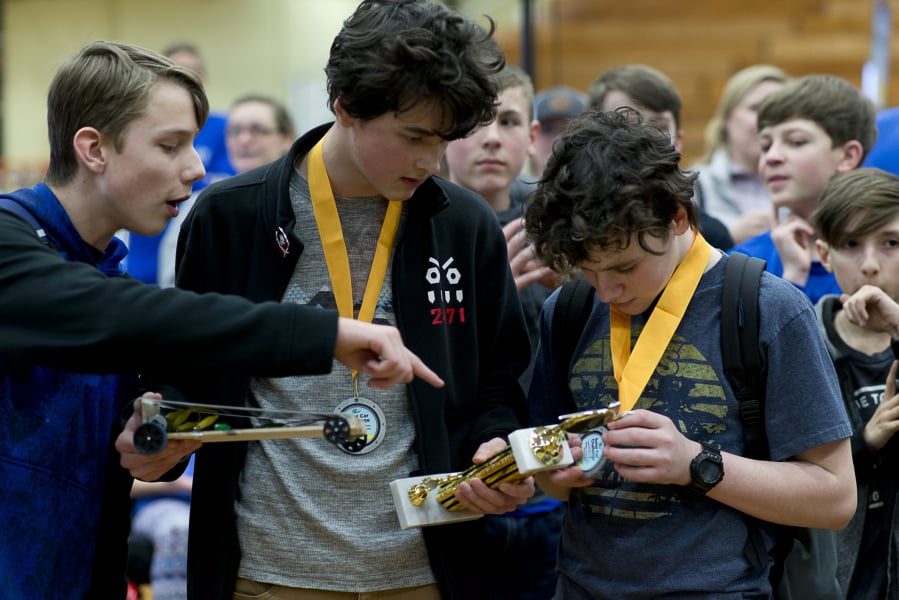Mason McCarty, 14, tried to stay calm.
McCarty had just finished second in the middle school racing portion of Saturday’s Clark Public Utilities’ Solar Car Challenge at Hudson’s Bay High School in Vancouver. McCarty recorded that placing along with his friend Aran O’Day, 14, who attends eighth grade with him at Odyssey Middle School in Camas.
“I’m still shaking from the adrenaline,” McCarty said, looking down at his hands minutes after finishing racing for the day.
“It was really fun competing,” O’Day said.
McCarty and O’Day made up one of more than 175 teams from Clark County elementary, middle and high schools that competed in the competition. Students placed in racing competitions, as well as other categories such as best design. The challenge was organized to teach kids about STEM in a fun way. McCarty and O’Day said they enjoyed using trial and error to build their solar battery-hybrid car.
“I saw everybody having fun, even if they didn’t win,” McCarty said.
McCarty and O’Day said they think their car fared so well because they tested three gear ratios before deciding which one worked best. They also cycled through solar panels before choosing the most aerodynamic option.
Heather Allmain, communications services manager for Clark Public Utilities, said Saturday’s race was a culmination of a couple of months of work from the students. About 700 teams received solar car kits in January courtesy of the utility’s Green Lights program and partnerships with WaferTech and Columbia Credit Union.
On Saturday, the solar cars had to meet a checklist of specifications before the cars could qualify for the race. The students did poster presentations on their cars, and technical industry professionals interviewed them about their designs. The solar challenge is like combining a science fair with a pinewood derby.
“This competition isn’t just about building a car,” Allmain said. “It’s also about that process they went through to build the car and demonstrate their learning and experience with that.”
Allmain explained that the race grew by about 75 teams from its first iteration last year. She said providing free solar car kits to the students ensures that anyone can participate in the competition, bringing inclusivity to a STEM-based project.
“We’re seeing all kids from across all school districts,” she said. “Lots of diversity in the participation, and we’re seeing girls that are really being successful and getting to experience these things, when typically girls might not put themselves out there to do these types of things.”
Chaun MacQueen, director of clean energy at Bonneville Environmental Foundation, said the goal of the challenge is to show kids “they can literally create or do anything they’re focused on.” MacQueen said it’s exciting for kids to make something with their hands and watch it operate properly. Allmain added that it’s also exciting to see how kids react when things don’t go exactly as planned.
“Even when they don’t experience success, that’s part of the process,” Allmain said. “Maybe it doesn’t work, so you go back to the drawing board and try again and see what works, and look at other people’s cars and learn from their experiences. Even if they’re not successful, they’re learning something and getting that hands-on experience.”




